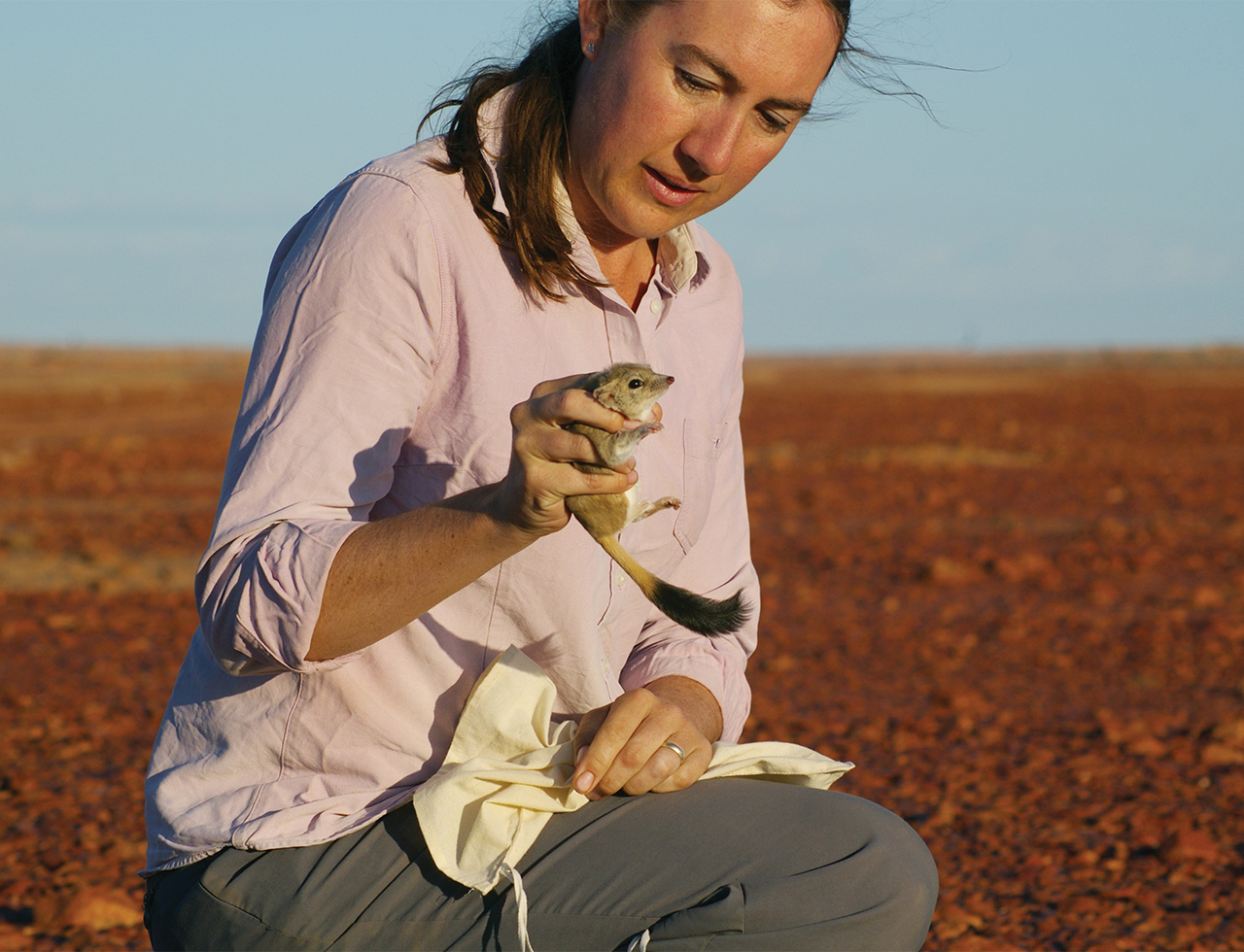
Kowari one of the first species to benefit from hub havens analysis
Wednesday, 08 December 2021Dr Katherine Tuft,
General Manager, Arid Recovery
The most impactful Threatened Species Recovery Hub research for us has come from the combined forces of the kowari project (led by Professor Chris Dickman) and the safe havens analysis (led by Professor Sarah Legge et al.). The work to identify gaps in the adequacy of the current safe haven network to protect species vulnerable to cat and fox predation highlighted the kowari as a species not yet represented in any haven.
Then the kowari project work quantified the extinction risk for the species, adding weight to a nomination to the Threatened Species Scientific Committee to uplist the kowari from Vulnerable to Endangered under the EPBC Act and the momentum to do more for the species. As a result, we had funding success in the Department of Agriculture, Water and the Environment’s recent Environment Restoration Fund Safe Haven grant round to reintroduce the kowari to Arid Recovery by 2023, thanks to how the funding round targeted improved representation of species in the safe haven network.
The other hub research that has been incorporated into our operations is the field experimental work led by Dr Hugh McGregor to understand whether and how cats ‘prey-switch’ after rabbit control. That research identified an important moment when cat baiting should be most successful – after a knockdown in rabbits. We’ve incorporated that understanding into our feral animal monitoring and cat management planning in the halo outside the fenced reserve so we can be more targeted with cat control.
Top image: Dr Katherine Tuft with a kowari. Image: William La Marca